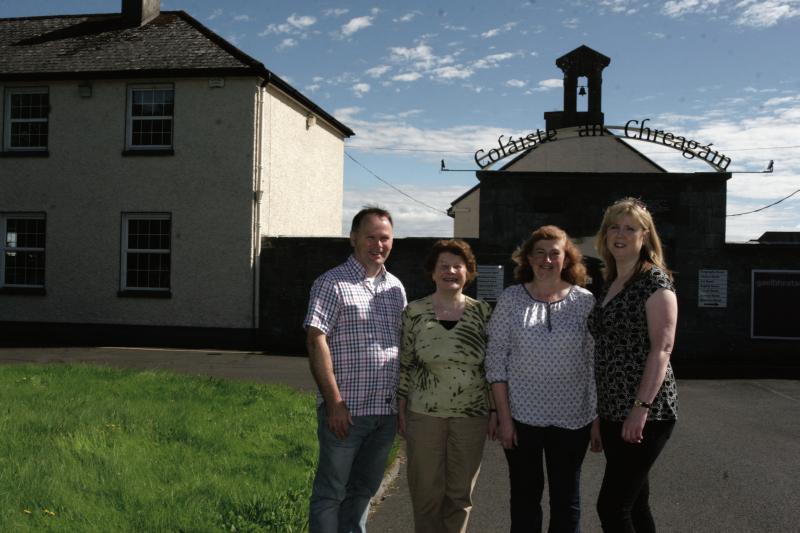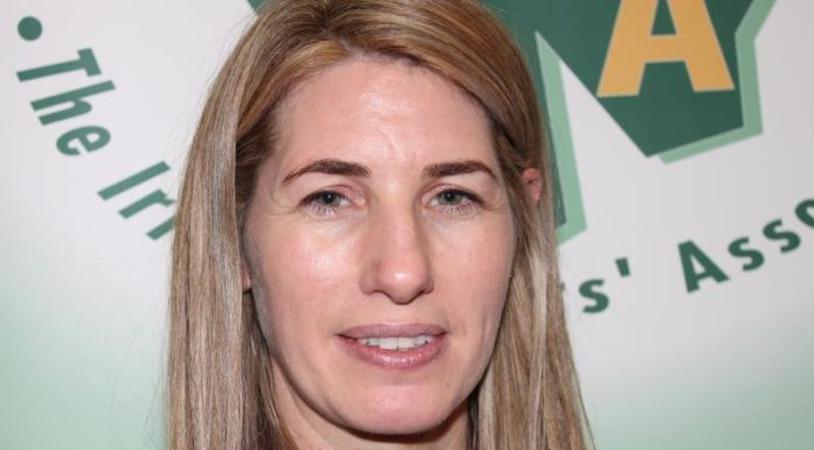Connacht Tribune
The lost story of Galway’s orphans

The story of Orphan Girls of Mountbellew Workhouse who travelled to Western Australia has long been forgotten. Stephen Corrigan meets Paula Kennedy who has been working to link their families in Australia with their ancestral home.
At first glance, it might be difficult to see a connection between Mountbellew and Western Australia – but the ties between these two hugely different places have been traced thanks to a group of local researchers.
So what links this small town in the North East of Galway with a vast State in Australia that’s over 30 times the size of Ireland? The answer lies with 32 orphan girls who were transported to the far side of the world way back in 1852 – escaping some of the worst poverty and deprivation in the aftermath of the Great Famine.
Two years ago, a group of people with a shared interest in genealogy and local history came together to examine the forgotten orphan girls of Mountbellew Workhouse – those who made the five-month-long journey aboard the Palestine ship in 1852.
Paula Kennedy, a genealogist working on the project, says that it all started when somebody got in touch with her trying to find their ancestors.
“A lady got in touch with me and she was eager to find her ancestors and as I read her story about the Mountbellew Workhouse, I knew this had to be done.
“I decided later that I would put it in the paper to see who was interested in doing the project with me. Kathleen Connolly came on board – she had researched one of the girls because she worked in the resource centre in Moylough and these visitors came in one day and asked for information on the Palestine Girls which piqued her interest.
“Then Martin Curley is a genealogist and works in the schools – he is interested in the DNA side. Local researcher, Mary McLoughlin, helped out, so, between us, we had a lot to give,” says Paula.
Once they established the list of people who had made the journey, they began to research further and seek out people in Australia who believed they could be linked to the Palestine Girls.
“Our records here for that period are just terrible so it was Australia that had more information than we had and I suppose that we were just the glue that brought the two together and tried to match everything up,” says Paula.
“In the last 12 months, a lot of the descendants have come home and I show them around the local area; I bring them to where the workhouse was and to the graveyard behind it.
“If we know the locality where they are from, we will show them that – it might just be a gate now and there might be no house but it is lovely for them and they get to feel that connection,” she continues.
While there is no way to be certain, Paula and her colleagues have come to the conclusion that the young women would have been eager to make the break from Ireland.
“We have reason to think that they were actually jumping to do it – that is our gut feeling and we have done presentations on this and we have asked for people’s views and if you think about it, the workhouse was not a place you’d want to be.
“Their parents were dead and they were big families – we’re talking about 10, 12 or 14 children.
“The grandparents may have taken a few but the rest would go into the workhouse and they went in knowing, sometimes, that they would go abroad and they would have a better chance because there was nothing here for them at that stage – there was no food, no job prospects,” explains Paula.
Despite a considerable lack of documentation, the minutes of meetings of the workhouse Board of Guardians are available and they give some insight into how those who travelled were chosen, says Paula.
An agent of the State would decide to take a certain number of the girls from each workhouse – with their main aim to provide wives for the ex-convicts in Britain’s newest colony.
For this reason, ships like the Palestine became known as ‘Irish bride ships’.
“Each girl that was travelling had to have calico [fabric], they had to have a bonnet, a comb, a certain amount of dresses for the voyage and soap.
“They left Galway and travelled to Dublin; from Dublin, they travelled to Plymouth and they usually stayed two or three days in Plymouth.
“From there, they travelled to Western Australia and that took five months. On this particular journey, there was six births and 12 deaths.
“They were looked after very well on the ship from what I can understand and when they got to Western Australia, they had to walk something like 60 miles over a day or two to get to where they were going,” says Paula.
While the prospect of a new life was a huge motivation for these teenagers aged between 14 and 18, it was different to the Australia we know today.
“They were hit with heat, spiders, snakes and they had not ever heard of aboriginals – during that time, the land settlements were going on and the aboriginals were losing their land so there was conflict with the English,” she says.
Prior to the Palestine, between 1848 and 1850, 4,000 Irish girls were brought to the Australian Colonies under the Earl Grey Scheme and so the practice was not new.
While it continued for some time, worries about their Catholicism and a lack of skills leaving the workhouse meant the practice would stop.
However, some of the Palestine Girls researched by Paula and her colleagues done very well and their legacies live on today.
The Cunningham sisters, Catherine and Mary, were two of the 32 that travelled. Mary’s son had a marked impact on law and order – significant because of his poor background and religion.
Her son, William Charles Sellenger, retired in 1928 as Chief Inspector of the Western Australia Police Force.
The Sellenger Centre for Research in Law, Justice and Social Change at the Edith Cowan University in Perth is named after him.
Mary Dooley was another of the women who went on to have a significant impact on modern Western Australia as she and her cousins, the Scanlons, became the first midwives in the area and delivered a whole generation to the new Australian State.
DNA testing kits have become easier to access in recent times and as a result, Ellen Hansberry, one of those who travelled, has been linked to Nuala Healy of Clonkeenabbert, Abbeyknockmoy – bringing to an end the separation of the families since Ellen’s departure.
While a stigma still exists today about those who had relatives in the workhouses, particularly among the older generation, Paula hopes that this history can be kept alive by talking about it.
“It is unbelievable that from just this segment of Galway, its DNA has gone over there and established huge amounts – we need to keep it alive and to keep it in people’s thoughts.
“We never knew anything about these girls that went abroad but they are part of our history and they shouldn’t be forgotten about,” says Paula.
Ceremony marks culmination of two-year research effort
In May of this year, a commemorative ceremony will take place to remember 32 young women who left Mountbellew Workhouse for Western Australia in 1852 – the culmination of two years of research into their lives.
In pursuit of a better life than what was on offer to them in a country decimated by famine and poverty, they stepped aboard the Palestine ship for a five-month-long journey – not knowing what they were facing.
Now, almost 170 years later, some of their ancestors will return to Galway to trace their footsteps and celebrate the impact they have had on Australian life.
Local genealogist, Paula Kennedy, says they hope the event will mean a lot to those who are travelling all the way from the Southern Hemisphere – in search of where their story began.
“Their legacies are huge within that part of Australia. For us, as Irish people, most of us know all about our great grandparents but for Australians, they may not have that connection,” she explains.
From Friday, May 4, a weekend-long itinerary has been drawn up which includes a visit to Ruane’s Pub in Glentane for a rambling house session.
This will be followed by a conference in Portumna Workhouse and a talk from Bill Marwick, a descendant of Mary Ann Taylor who left Mounbellew Workhouse on the Palestine.
Finally, a mass will be held in Mountbellew and a gathering of all the ancestors who are visiting the area – while there will also be an opportunity for those visiting to explore their ancestral locality.
“It’s like it is going full circle – they will be coming back to their homeland because this is their legacy,” says Paula.
She says that the group have had huge support from Irish groups in Australia and that those links have helped them to grow this project and make contact with the relatives of those who settled in Western Australia.
They hope to make a permanent memorial to the orphan girls of Mountbellew Workhouse in the near future and to find a link to the families of all 32 who travelled.
“It was a horrible time in Irish history but it shouldn’t be forgotten about,” says Paula.
Connacht Tribune
West has lower cancer survival rates than rest

Significant state investment is required to address ‘shocking’ inequalities that leave cancer patients in the West at greater risk of succumbing to the disease.
A meeting of Regional Health Forum West heard that survival rates for breast, lung and colorectal cancers than the national average, and with the most deprived quintile of the population, the West’s residents faced poorer outcomes from a cancer diagnosis.
For breast cancer patients, the five-year survival rate was 80% in the West versus 85% nationally; for lung cancer patients it was 16.7% in the west against a 19.5% national survival rate; and in the West’s colorectal cancer patients, there was a 62.6% survival rate where the national average was 63.1%.
These startling statistics were provided in answer to a question from Ballinasloe-based Cllr Evelyn Parsons (Ind) who said it was yet another reminder that cancer treatment infrastructure in the West was in dire need of improvement.
“The situation is pretty stark. In the Western Regional Health Forum area, we have the highest incidence of deprivation and the highest health inequalities because of that – we have the highest incidences of cancer nationally because of that,” said Cllr Parsons, who is also a general practitioner.
In details provided by CEO of Saolta Health Care Group, which operates Galway’s hospitals, it was stated that a number of factors were impacting on patient outcomes.
Get the full story in this week’s Connacht Tribune, on sale in shops now, or you can download the digital edition from www.connachttribune.ie. You can also download our Connacht Tribune App from Apple’s App Store or get the Android Version from Google Play.
Connacht Tribune
Galway minors continue to lay waste to all opponents

Galway 3-18
Cork 1-10
NEW setting; new opposition; new challenge. It made no difference to the Galway minor hurlers as they chalked up a remarkable sixth consecutive double digits championship victory at Semple Stadium on Saturday.
The final scoreline in Thurles may have been a little harsh on Cork, but there was no doubting Galway’s overall superiority in setting up only a second-ever All-Ireland showdown against Clare at the same venue on Sunday week.
Having claimed an historic Leinster title the previous weekend, Galway took a while to get going against the Rebels and also endured their first period in a match in which they were heavily outscored, but still the boys in maroon roll on.
Beating a decent Cork outfit by 14 points sums up how formidable Galway are. No team has managed to lay a glove on them so far, and though Clare might ask them questions other challengers haven’t, they are going to have to find significant improvement on their semi-final win over 14-man Kilkenny to pull off a final upset.
Galway just aren’t winning their matches; they are overpowering the teams which have stood in their way. Their level of consistency is admirable for young players starting off on the inter-county journey, while the team’s temperament appears to be bombproof, no matter what is thrown at them.
Having romped through Leinster, Galway should have been a bit rattled by being only level (0-4 each) after 20 minutes and being a little fortunate not to have been behind; or when Cork stormed out of the blocks at the start of the second half by hitting 1-4 to just a solitary point in reply, but there was never any trace of panic in their ranks.
For more, read this week’s Connacht Tribune.
Connacht Tribune Digital Edition App
Download the Connacht Tribune Digital Edition App to access to Galway’s best-selling newspaper.
Click HERE to download it for iPhone and iPad from Apple’s App Store, or HERE to get the Android Version from Google Play.
Or purchase the Digital Edition for PC, Mac or Laptop from Pagesuite HERE.
Get the Connacht Tribune Live app
The Connacht Tribune Live app is the home of everything that is happening in Galway City and county. It’s completely FREE and features all the latest news, sport and information on what’s on in your area. Click HERE to download it for iPhone and iPad from Apple’s App Store, or HERE to get the Android Version from Google Play.
Connacht Tribune
Gardaí and IFA issue a joint appeal on summer road safety

GARDAÍ and the IFA have issued a joint appeal to all road users to take extra care as the silage season gets under way across the country.
Silage harvesting started in many parts of Galway last week – and over the coming month, the sight of tractors and trailers on rural roads will be getting far more frequent.
Inspector Conor Madden, who is in charge of Galway Roads Policing, told the Farming Tribune that a bit of extra care and common-sense from all road users would go a long way towards preventing serious collisions on roads this summer.
“One thing I would ask farmers and contractors to consider is to try and get more experienced drivers working for them.
“Tractors have got faster and bigger – and they are also towing heavy loads of silage – so care and experience are a great help in terms of accident prevention,” Inspector Madden told the Farming Tribune.
He said that tractor drivers should always be aware of traffic building up behind them and to pull in and let these vehicles pass, where it was safe to do so.
“By the same token, other road users should always exercise extra care; drive that bit slower; and ‘pull in’ that bit more, when meeting tractors and heavy machinery.
“We all want to see everyone enjoying a safe summer on our roads – that extra bit of care, and consideration for other roads users can make a huge difference,” said Conor Madden.
He also advised motorists and tractor drivers to be acutely aware of pedestrians and cyclists on the roads during the summer season when more people would be out walking and cycling on the roads.
The IFA has also joined in on the road safety appeal with Galway IFA Farm Family and Social Affairs Chair Teresa Roche asking all road users to exercise that extra bit of care and caution.
“We are renewing our annual appeal for motorists to be on the look out for tractors, trailers and other agricultural machinery exiting from fields and farmyards,” she said.
For more, read this week’s Connacht Tribune.
Connacht Tribune Digital Edition App
Download the Connacht Tribune Digital Edition App to access to Galway’s best-selling newspaper.
Click HERE to download it for iPhone and iPad from Apple’s App Store, or HERE to get the Android Version from Google Play.
Or purchase the Digital Edition for PC, Mac or Laptop from Pagesuite HERE.
Get the Connacht Tribune Live app
The Connacht Tribune Live app is the home of everything that is happening in Galway City and county. It’s completely FREE and features all the latest news, sport and information on what’s on in your area. Click HERE to download it for iPhone and iPad from Apple’s App Store, or HERE to get the Android Version from Google Play.












